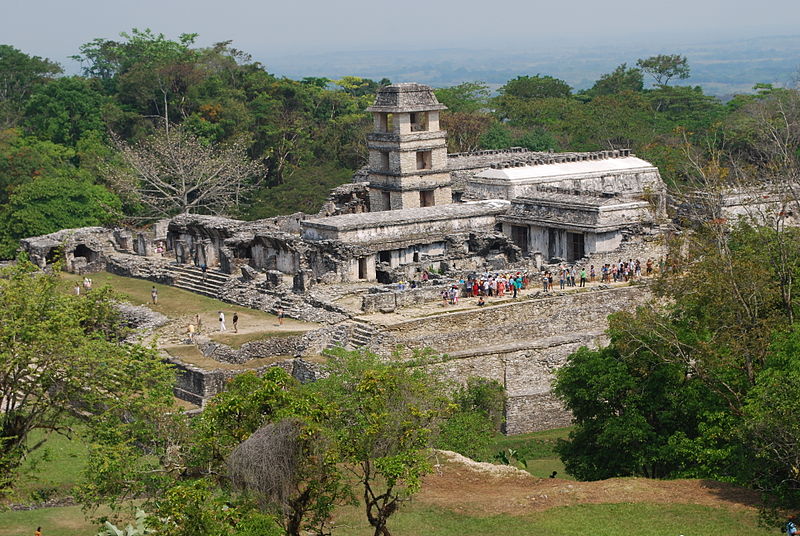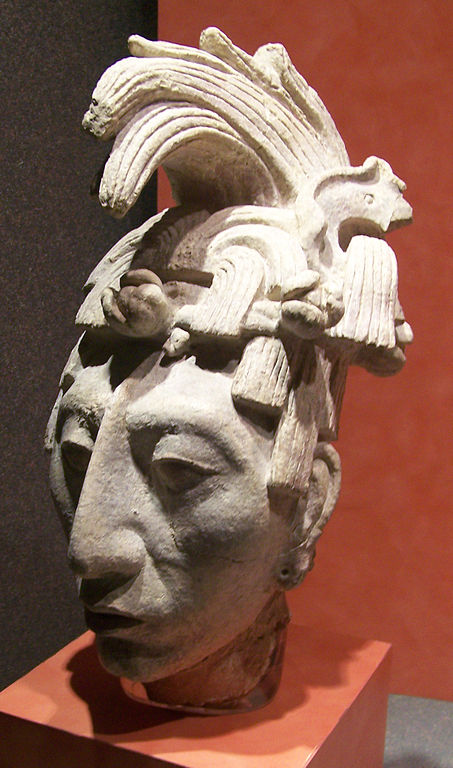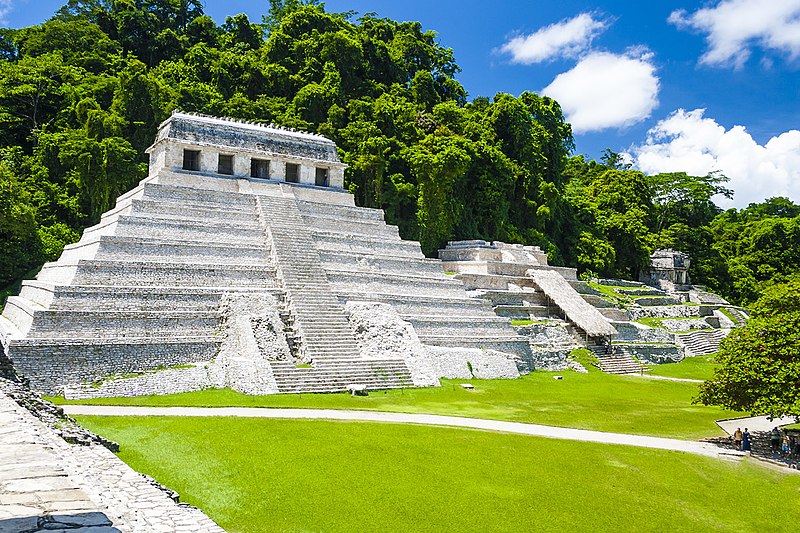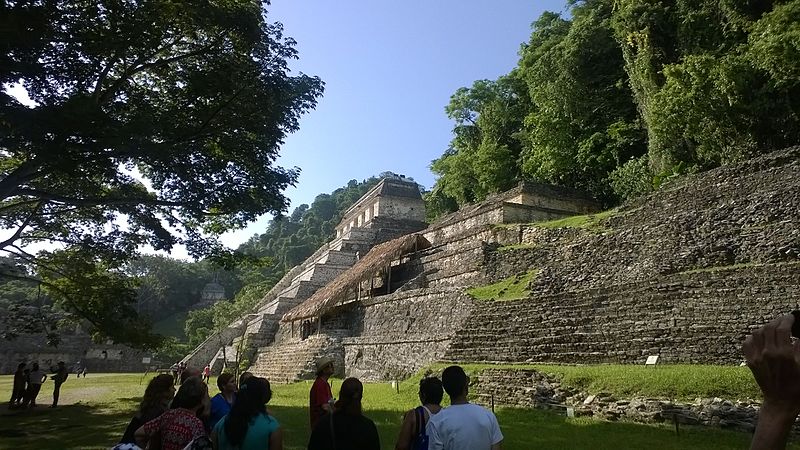Palenque
Palenque is the ruins of an ancient Mayan city located in the northeastern part of the state of Chiapas in Mexico. The second name of the city is Lakamkha, which translates as "Big water".

The city flourished until the 3rd-8th century, when it was the cultural and political center of the Maya, but after that it fell into decline due to numerous raids by neighboring tribes and was absorbed into the jungle. Palenque is smaller in size than Tikal, Chichen Itza, but it has some of the best architectural, sculptural, bas-relief carvings and elements that the Maya have ever produced. Most of the history of Palenque has been reconstructed after reading the hieroglyphic inscriptions on many monuments. Historians now have a long succession of Palenque's ruling dynasty and extensive knowledge of the city's rivalry with its neighbors.
Europeans learned about the city in the 18th century from the stories of local residents, and in 1784 an expedition was sent to the jungle during which they created the first map of the city, studied bas-reliefs and sculptures. In the following years, scientists studied the sculptures, documented the finds, and deciphered the inscriptions. During the decoding, it turned out that the most significant of all the rulers of the city was Pakal the Great, under whom most of the temples and palaces were built. During his reign, the level of influence of the city surpassed even Tikal. After his death, he was placed in a sarcophagus, which contained a huge collection of jade and gold jewelry, his face was decorated with a jade mask, and a jade suit with gold wire was put on. In terms of the abundance of decorations, Pakal's tomb was the richest found at that time.
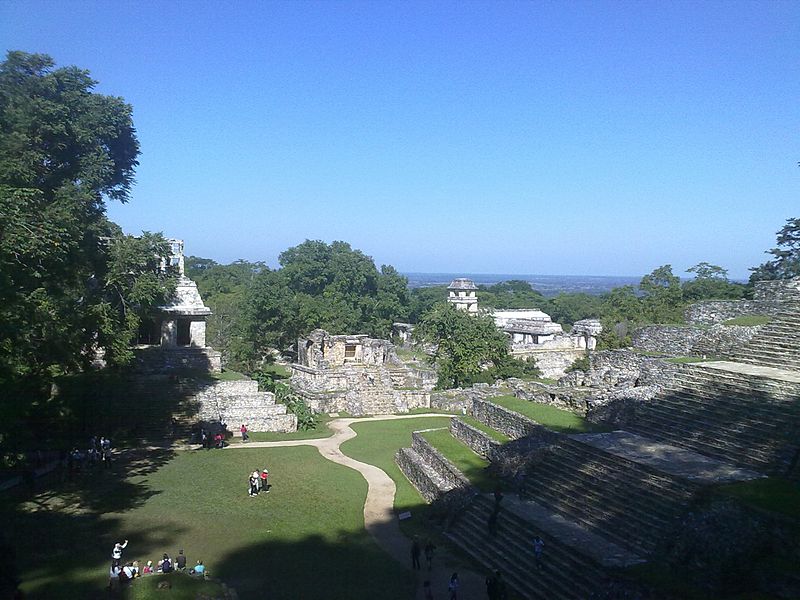
The temple of inscriptions is of great value to archaeologists, where 617 hieroglyphs are inscribed on the walls and stairs, telling about the life of the city for two hundred years. The temple is made in the form of a nine-level pyramid with a height of 24 meters, to the top of which there is a staircase divided into 4 platforms. At the top there is a hidden tunnel to Pakal's tomb. The ruler was placed in a huge sarcophagus made of a single piece of stone weighing 15 tons and covered with a slab weighing 5 tons. The sarcophagus lid is decorated with a scene of Pakal's resurrection.
The palace of the ruler of the city of Palenque, decorated with numerous sculptures and bas-reliefs, is also noteworthy. A four-storey observation tower stands above the palace. It is also worth looking at the Temple of the Skull, the Temple of the Jaguar, the Temple of the Count.
